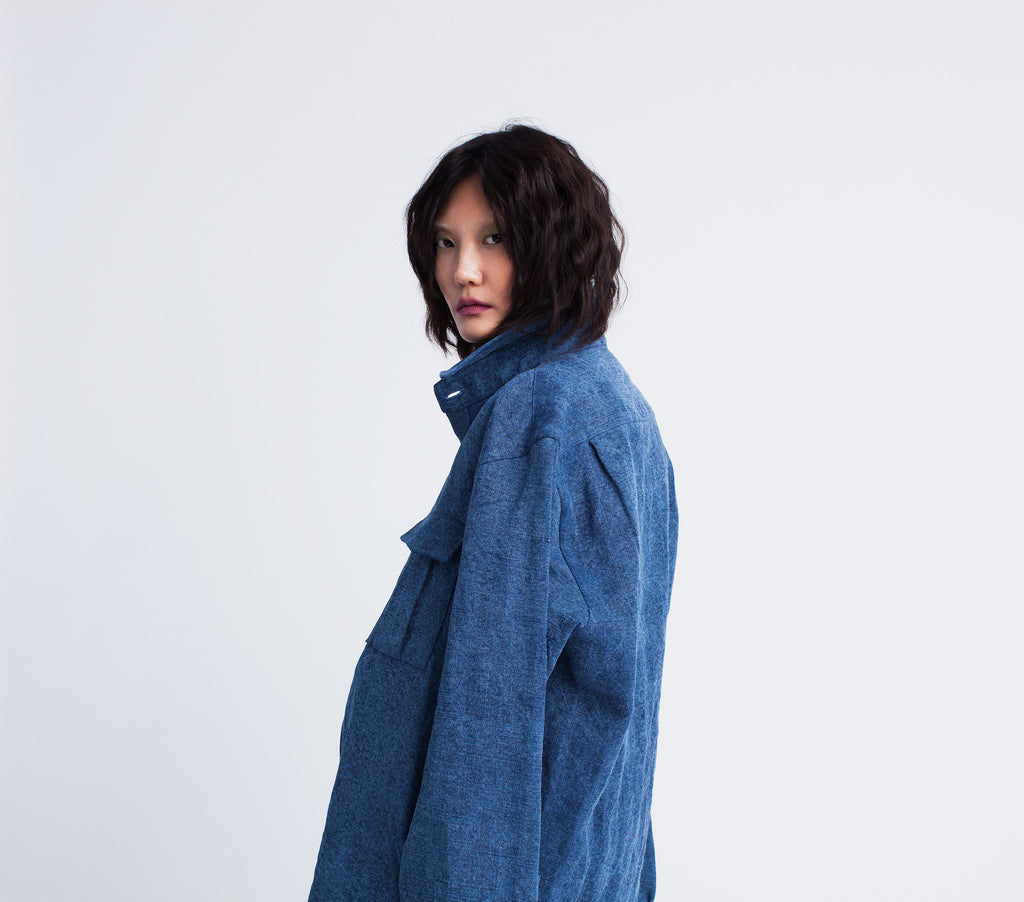
Linen is closely associated with hot-weather wear. Traditionally, linen suits and dresses are designated for spring and summer. The physical structure of the underlying flax fibers is conducive to wicking moisture, helping wearers feel dry and cool even in the muggiest of climates. At blluemade, as we watch the leaves start to change and the wind get colder, we don’t want to pack away the linen we have loved wearing so much all summer.
When the weather turns cool, we don’t want to give up the feeling of 100% long-line linen against the skin. Anyone who sleeps in linen sheets knows just how appealing high-quality linen can feel in both texture and temperature regulation. We also love wearing linen year-round for sustainability reasons. If we can wear the same shirts in all four seasons that means less production and less waste, rather than a closet filled with items worn only a few times a year. At blluemade, we want to make linen wearable in all seasons and promote the concept of winter linen.
There are several physical factors that determine how warm textiles will be. These include: the weight of the textile, thickness of the yarn, and the underlying fiber structure. We take all these factors into account when designing our current cold weather line to maximize warmth and maintain our commitment to linen.
The chart below compares linen to the other popular natural fibers used in clothing: silk, wool, and cotton. This study compares their relative conductivity, or how fast the substance transfers heat. A high conductivity number means that the material dissipates heat more quickly. We find that the warmest material is silk followed by wool, followed by cotton, and then finally linen.

This means if we were to take wool and linen of the same weight and thickness, wool would absolutely be the warmer textile. But notice the significant differential in this chart between mesh linen and woven linen (column 5 last 2 rows). Here the conductivity between of woven linen is twice that of mesh linen (4.19 λ to 9.87λ). Just by changing the weave and density you can dramatically affect its conductivity.
So when we chose the textiles for our fall/winter line we looked for linens with a high thickness and a high weight per yard. This is clear in our indigo jacket, pictured at the start of this post, which clocks in at 15.3 oz/yd. This provides a warm insulating effect and makes the jacket great in fall and winter. Likewise our linen denim shirt and fitted trousers use heavy-weight linens which are more insulating than traditional thin linen garments, but still have that great linen feel. All of these items are great too for those in-between-season days that start and end cool but are warm midday. Wearing these heavyweight linens keeps you comfortable all day long.

Another surefire way to make linen work in winter is to think of it as a layering element. Below the same button-up in two colors is being styled as an undershirt and an overshirt. This workwear inspired get up looks great and also helps insulate. As mentioned earlier, linen is great at wicking moisture and sweat and as an underlayer it can’t be beat. It helps you feel dry even when you are bundled up. The etymology of lingerie comes from its original construction in linen. So it has been known for centuries that linen feels great against the skin even if it is only an underlayer.

At blluemade we happily wear our linen clothes year-round. If you sleep in linen sheets, you already know how wonderful linen is every month of the year. Our heavyweight linen garments bring the wonderfully soft texture of linen to your closet, brightening up the darkest months of the year.
